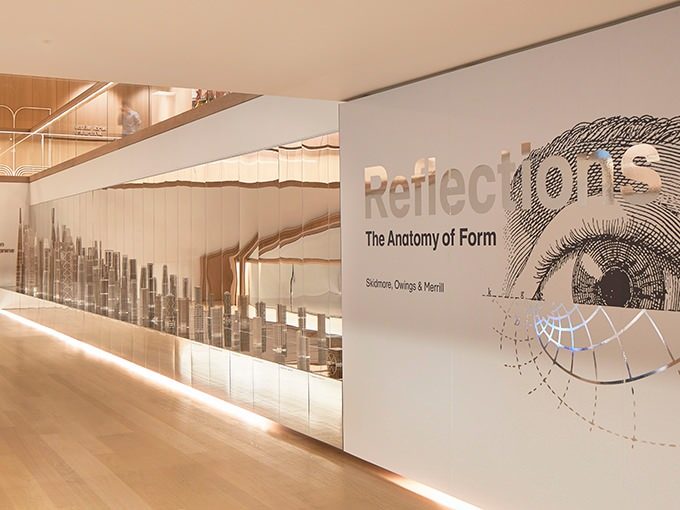
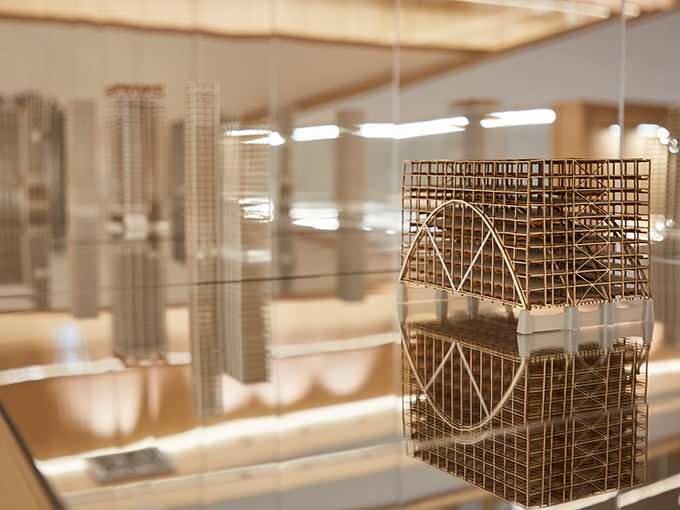
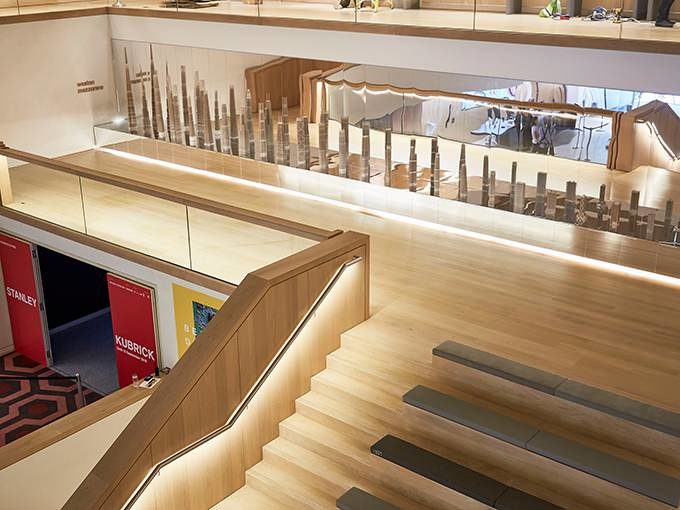
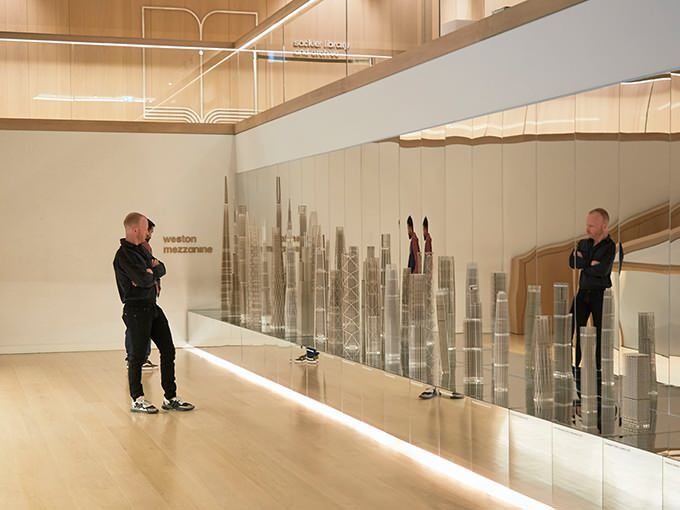
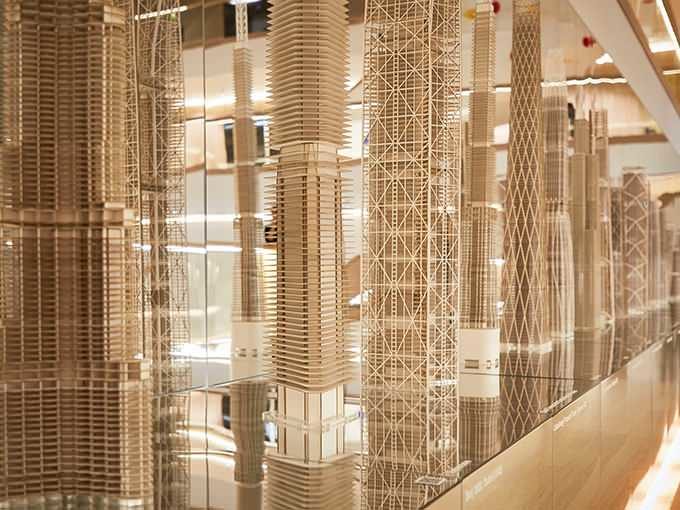
On Friday, September 6th, “Reflections: The Anatomy of Form” opened at the Design Museum as part of London Design Festival 2019. Running through Tuesday, October 1st, the exhibition is the latest in a series of special exhibitions presented in collaboration with venues around the world.
Showing for the first time in London, the exhibition comprises 31 scale models of different building systems, with both structure and architecture designed by Skidmore, Owings & Merrill (SOM), an interdisciplinary practice that brings more than 80 years of experience to the design of projects at every scale.
Central to SOM’s work as an interdisciplinary practice are the principles of simplicity, clarity, sustainability, efficiency and economy, and the notion that structure and architecture should be mutually reinforcing. The exhibit showcases a selection of the firm’s groundbreaking projects that have anticipated new ways of living, working, and learning. It presents projects of different types and scales, including Exchange House and Manhattan Loft Gardens in London, 875 North Michigan Avenue (formerly John Hancock Center) and Willis Tower (formerly Sears Tower) in Chicago, and the Burj Khalifa in Dubai.
Reflections: The Anatomy of Form
The exhibition explores the relationship between buildings and forms found in nature, and the ways in which both respond to the laws of physics.
A critical consideration of this exploration is scale. As natural forms grow, their anatomy changes. So it is with buildings. Yet, unlike in nature, building systems do not necessarily have to evolve from a previous solution. Whole new solutions can be created without precedent so that, as buildings become taller or more efficient in response to engineering challenges, new “species” are designed.
As in nature, the anatomy of buildings can be classified. The models presented in the exhibition are unadorned structural systems; each was designed as a distinct response to the forces of nature at a different scale, in turn resulting in a form that is unique. When architecture and structure are so aligned, they are inseparable and the design has integrity.
“Reflections: The Anatomy of Form” is a precursor to the upcoming exhibition, “The Anatomy of Structure: Art + Engineering + Architecture,” opening at the Ambika Gallery at The University of Westminster, in February 2020.
Reflections: The Anatomy of Form
September 6 – October 1, 2019
Daily: 10:00 a.m. – 6:00 p.m.
The Design Museum
224-238 Kensington High Street
Kensington
London W8 6AG
About Skidmore, Owings & Merrill (Europe) LLP
Skidmore, Owings & Merrill (SOM) is an influential collective of architects, designers, engineers and planners, responsible for some of the world’s most technically and environmentally advanced buildings, and significant public spaces. From a strategic regional plan to a single piece of furniture, SOM’s designs anticipate change in the way we live, work and communicate, and have brought lasting value to communities around the world. The firm’s approach is highly collaborative, and its interdisciplinary team is engaged on a wide range of international projects, with creative studios based across the globe.
About the Design Museum
The Design Museum is the world’s leading museum devoted to architecture and contemporary design, its work encompasses all elements of design, including fashion, product and graphic design. Since it opened its doors in 1989 the museum has displayed everything from an AK-47 to high heels designed by Christian Louboutin. It has staged over 100 exhibitions, welcomed over five million visitors and showcased the work of some of the world’s most celebrated designers and architects including Paul Smith, Zaha Hadid, Jonathan Ive, Miuccia Prada, Frank Gehry, Eileen Gray and Dieter Rams. On 24 November 2016, The Design Museum relocated to Kensington, west London. Leading architectural designer John Pawson has converted the interior of a 1960s modernist building to create a new home for the Design Museum giving it three times more space in which to show a wider range of exhibitions and significantly extend its learning programme.